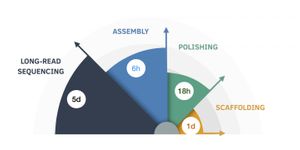Electronic nose could detect COPD
An electronic nose capable of identifying respiratory tract infections could come in great handy in times like these. At least that’s what researchers from Russia and Italy hope with the development of their new compact sensor system technology that analyzed exhaled air to look for pathologies.
The system uses modified carbon nanotubes (CNTs) to analyze the chemicals in exhaled air. "CNTs were synthesized by aerosol chemical vapor deposition and deposited in the form of thin transparent and conductive films,” explains Albert Nasibulin, professor at the Skolkovo Institute of Science and Technology, professor of the Russian Academy of Sciences. Additionally, he adds, “This technology is highly reproducible, easily scalable and allows applying films of nanotubes to any surface.”
The electronic nose showed to be very effective at identifying patients with COPD, or chronic obstructive pulmonary disease. Of the study participants with COPD, the electronic nose successfully identified all individuals, which the researchers say has strong implications for its future use.
COPD forms in the bronchial mucosa when external pathogens such as gases and volatile particles are introduced. The disease results in an individual not being able to receive the necessary oxygen in their respiratory tract because of limited airflow. People with COPD are considered at high risk of complications when infected with COVID-19.
"Malfunctioning of human organs causes a change in a number of processes in the metabolism, which affects the composition of exhaled air. Its analysis can be used to identify diseases of the respiratory system as well as other internal organs, such as the stomach," explains Ivan Bobrinetskiy, Doctor of Science, project manager for the Russian Science Foundation grant, leading research associate of the National Research University of Electronic Technology.
"The proposed concept of the electronic nose allows for operational monitoring and preliminary detection of diseases in just a few minutes. At the same time, the sensors are reusable, and the basic data and the identification of possible pathologies of organs are transferred from the device to digital mode using methods of statistical data analysis, including the capabilities of artificial intelligence,” he concludes.
Sources: Eureka Alert, Advanced Healthcare Materials









